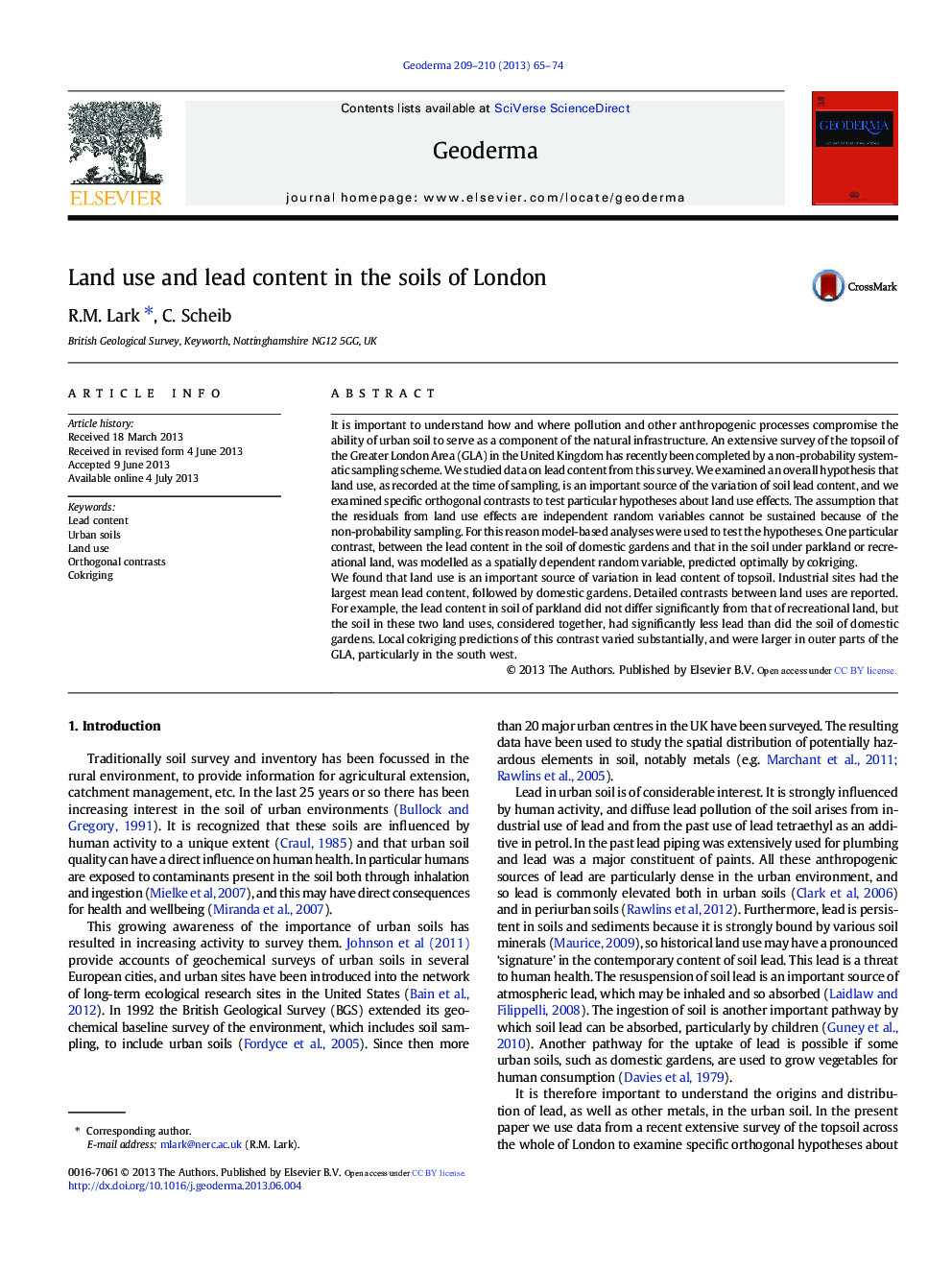| Article ID | Journal | Published Year | Pages | File Type |
|---|---|---|---|---|
| 6409089 | Geoderma | 2013 | 10 Pages |
â¢A detailed survey of soil lead across the Greater London Area is reported.â¢Orthogonal contrasts between land uses are tested in a model-based analysis.â¢Strong land use effects are found, reflecting a persistent legacy.â¢Overall land use contrasts can obscure spatially variable effects.â¢Spatially variable land use contrasts can be mapped by cokriging.
It is important to understand how and where pollution and other anthropogenic processes compromise the ability of urban soil to serve as a component of the natural infrastructure. An extensive survey of the topsoil of the Greater London Area (GLA) in the United Kingdom has recently been completed by a non-probability systematic sampling scheme. We studied data on lead content from this survey. We examined an overall hypothesis that land use, as recorded at the time of sampling, is an important source of the variation of soil lead content, and we examined specific orthogonal contrasts to test particular hypotheses about land use effects. The assumption that the residuals from land use effects are independent random variables cannot be sustained because of the non-probability sampling. For this reason model-based analyses were used to test the hypotheses. One particular contrast, between the lead content in the soil of domestic gardens and that in the soil under parkland or recreational land, was modelled as a spatially dependent random variable, predicted optimally by cokriging.We found that land use is an important source of variation in lead content of topsoil. Industrial sites had the largest mean lead content, followed by domestic gardens. Detailed contrasts between land uses are reported. For example, the lead content in soil of parkland did not differ significantly from that of recreational land, but the soil in these two land uses, considered together, had significantly less lead than did the soil of domestic gardens. Local cokriging predictions of this contrast varied substantially, and were larger in outer parts of the GLA, particularly in the south west.
